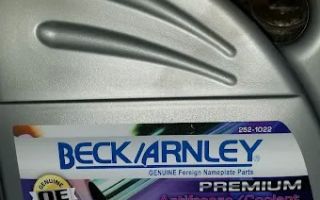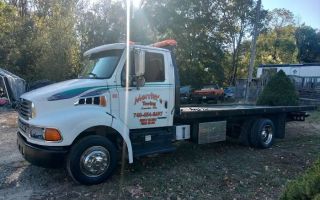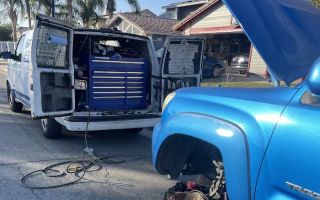Towing Safety Guidelines for a Safe and Efficient Experience
- The Importance of Towing Safety
- Preparing Your Vehicle for Towing
- Choosing the Right Towing Company
- Towing Equipment and Safety
- Real-Life Towing Situations and How to Handle Them
- How to Ensure Safe Towing Every Time
1. The Importance of Towing Safety
Towing a vehicle, whether for a roadside emergency or a scheduled transport, can be a challenging task that requires careful planning and execution. Understanding towing safety is crucial for preventing accidents, reducing damage to your vehicle, and ensuring the safety of both drivers and passengers. Without proper knowledge, towing can be hazardous. That’s why adhering to towing safety guidelines is vital for both professional tow truck operators and car owners who may need to call for a towing service.
Imagine this: a car breaks down on a busy highway. The driver, feeling rushed, decides to try and tow the vehicle with inadequate equipment. Not only is this dangerous, but it can also lead to further damage to the car, the towing vehicle, and pose a risk to others on the road. This is why knowing the best towing practices and guidelines is so important.
2. Preparing Your Vehicle for Towing
Before a vehicle is towed, there are several steps that must be followed to ensure it’s ready for transport. Properly preparing your car for towing is essential to avoid potential damage. The first step is to assess the condition of your vehicle. If your car is severely damaged, it may require specialized towing equipment.
One of the most important things to check is that the vehicle is properly aligned and that it is securely hitched to the towing truck. If your car is front-wheel drive, it may need to be towed with the front wheels off the ground, while rear-wheel or all-wheel-drive cars might require flatbed towing.
A real-life example would be a customer who called for an emergency tow after a tire blew out on a remote highway. The driver failed to check the tire condition beforehand and realized too late that the car was stuck in a precarious position. Luckily, a professional towing company responded swiftly, following towing safety guidelines to avoid damaging the vehicle further and ensuring that it was safely transported to a repair shop.
3. Choosing the Right Towing Company
When it comes to towing, not all companies are the same. It's essential to choose a reputable and experienced towing company that adheres to safety guidelines. Look for companies that are licensed, insured, and have a history of providing high-quality, safe towing services. Customer reviews and testimonials can help gauge the reliability of a towing service. A company with good feedback will likely have trained staff who are familiar with towing safety protocols.
A specific case that comes to mind is when a driver called a local towing service late at night after their car broke down. Unfortunately, the first company they called didn’t follow proper safety measures, and the vehicle sustained minor damage during the towing process. The driver then contacted a different company that used high-quality equipment and followed towing safety protocols, ensuring a smooth, damage-free tow to their destination.
4. Towing Equipment and Safety
The right towing equipment is just as important as the expertise of the towing company. Whether you are towing a passenger car or a larger vehicle, using the correct tools and machinery ensures both safety and effectiveness. Flatbed tow trucks, wheel lifts, and dolly lifts all serve different purposes, and knowing which one is appropriate for your vehicle is essential.
Equally important are safety features like safety chains, which help secure the vehicle during towing. If a car isn’t properly secured, it could shift during transit, causing accidents or damage. Towing chains and straps should always be checked for wear and tear before use.
5. Real-Life Towing Situations and How to Handle Them
Every towing situation is unique, and understanding how to handle different scenarios can save you time, stress, and money. For instance, a common issue arises when a vehicle gets stuck in an awkward or hard-to-reach location. In these situations, it’s crucial to call in professionals who know how to navigate difficult terrain safely.
Another scenario to consider is towing during inclement weather. Rain or snow can make roads slippery, and towing in these conditions requires extra caution. Drivers must use extra care when braking, turning, and following behind the towing truck to maintain a safe distance.
One memorable case involved a car owner whose vehicle was stuck in a muddy, flooded area after a storm. The tow truck operator used a heavy-duty winch system, ensuring that the car was retrieved safely without causing any further damage.
6. How to Ensure Safe Towing Every Time
To ensure a safe towing experience, always keep the following tips in mind:
- Check the Weather: Always consider weather conditions before towing. Rain, snow, or ice can make roads hazardous.
- Verify the Tow Truck’s Equipment: Ensure that the tow truck is equipped with the right tools for your vehicle.
- Communicate with the Towing Company: Be clear about the condition of your vehicle and the location for pickup.
- Stay Calm and Patient: Emergencies happen, but keeping a calm demeanor helps ensure that safety is maintained throughout the process.
If you’re looking for a reliable, professional towing service, consider reaching out to Rescue & Towing for top-notch assistance. Their team follows industry-standard safety protocols and offers a variety of towing services to fit your needs.




























